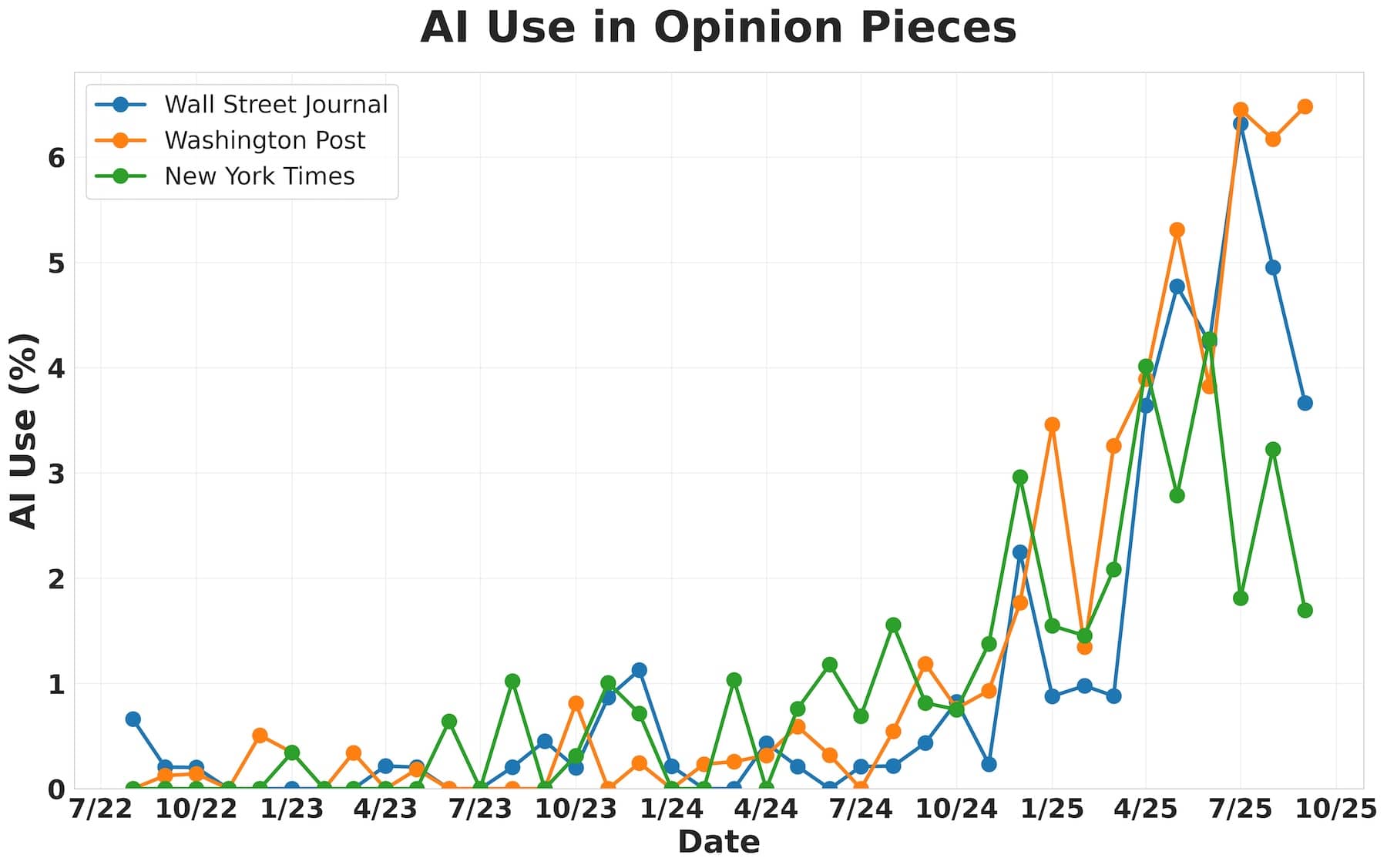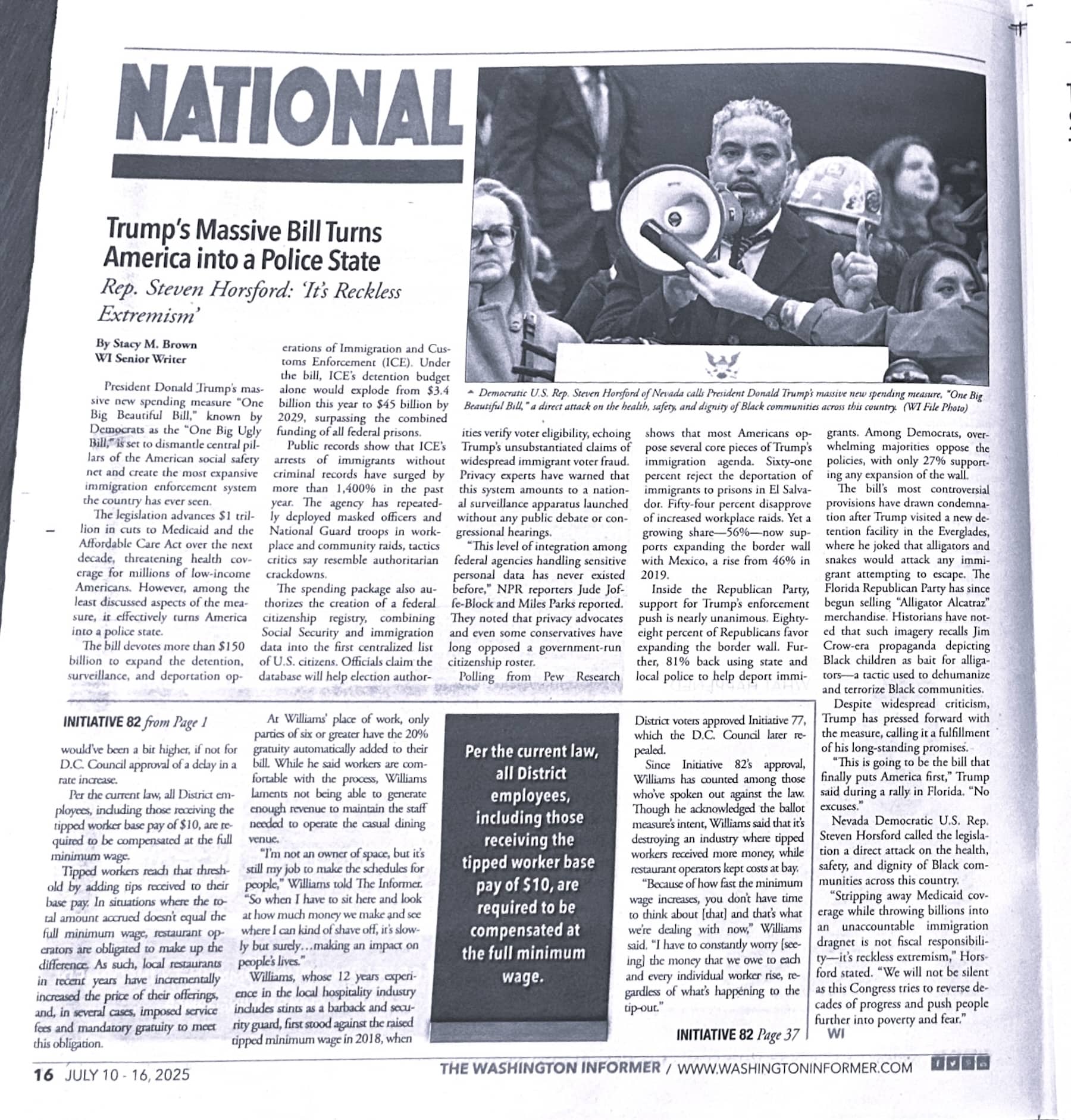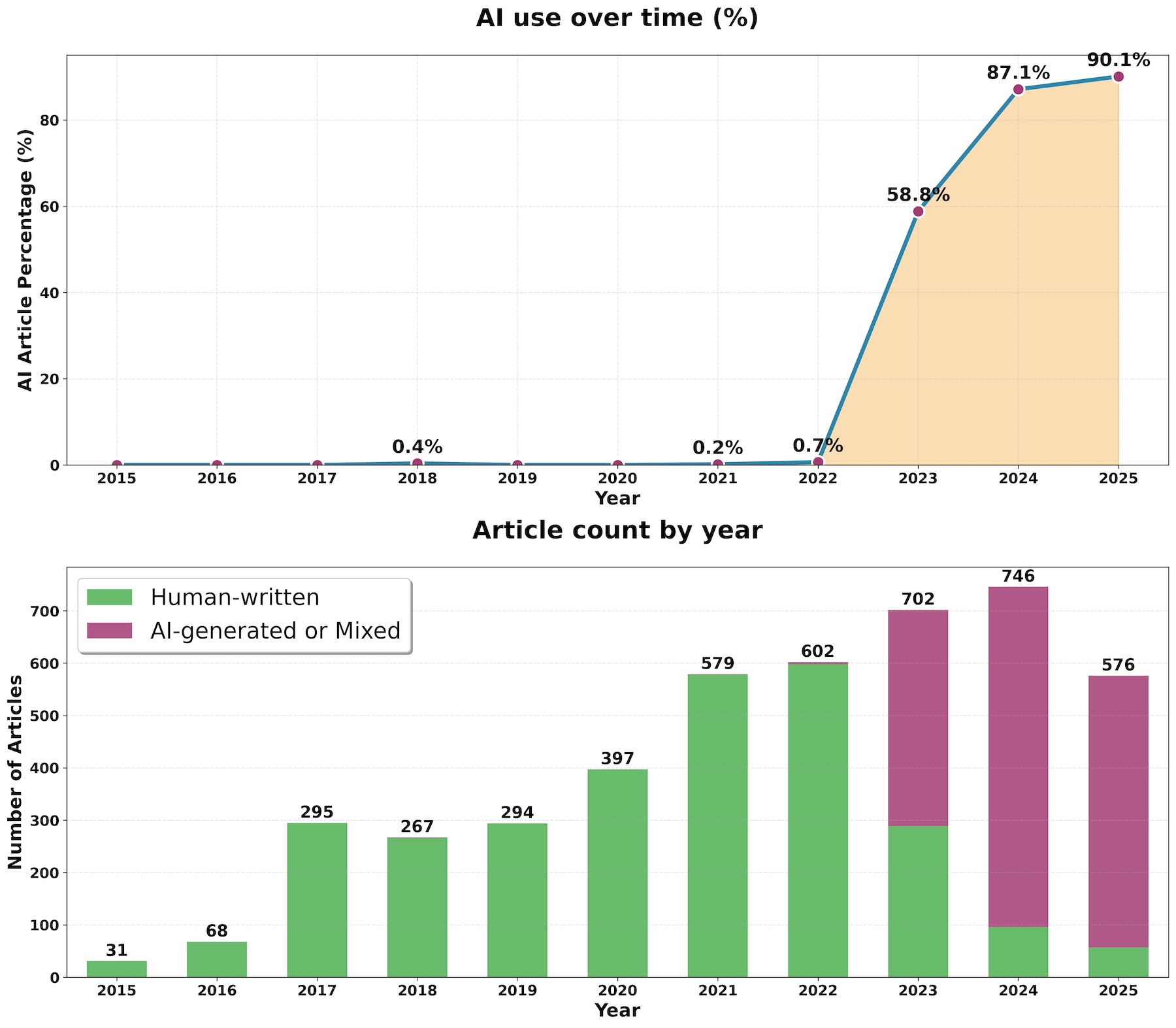ARTICLE AD BOX
A major study from the University of Maryland found that about nine percent of newly published American newspaper articles were at least partly written by artificial intelligence, almost always without disclosure.
Researchers analyzed over 250,000 articles from three datasets using the Pangram AI detector, which they report has a false positive rate of just 0.001 percent for news content.
AI adoption isn’t evenly spread across the US news industry. Local papers are far more likely to use automated writing tools than national outlets. Just 1.7 percent of stories from large newspapers (with circulations above 100,000) were flagged as AI-generated or hybrid, but that jumps to 9.3 percent for smaller local papers.
There are also major regional differences. Maryland (16.5 percent), Tennessee (13.6 percent), and Alabama (13.9 percent) have the highest rates of AI use, while the Northeast lags behind. States such as New Hampshire (2.9 percent) and Massachusetts (3.4 percent) have far less AI-generated news.
Ad
THE DECODER Newsletter
The most important AI news straight to your inbox.
✓ Weekly
✓ Free
✓ Cancel at any time
 Southern and Mid-Atlantic states have the highest rates of AI-generated news in local papers, while the Northeast remains far less affected. | Image: Russel et al.
Southern and Mid-Atlantic states have the highest rates of AI-generated news in local papers, while the Northeast remains far less affected. | Image: Russel et al.AI use is concentrated in data-heavy sections. Weather stories lead the pack with a 27.7 percent chance of being AI-generated, followed by science and technology (16.1 percent) and health (11.7 percent). Automated coverage is much lower for sensitive topics like war (4.3 percent) or crime and justice (5.2 percent).
Media companies take different approaches to AI
Who owns the paper matters. Boone Newspapers leads with over 20 percent of its articles attributed to AI, followed by Advance Publications at 13.4 percent. Other major chains—including Nash Holdings, Lee Enterprises, and Digital First—keep their AI use below two percent.
 Boone Newspapers stands out for its heavy reliance on AI-generated content, especially on tech topics, while other media chains are far more selective. | Image: Russel et al.
Boone Newspapers stands out for its heavy reliance on AI-generated content, especially on tech topics, while other media chains are far more selective. | Image: Russel et al.The study points out that several major media groups are suing AI companies for scraping their articles to train language models, even as those newsrooms quietly publish AI-generated stories themselves.
The surge in AI-generated content is particularly notable in opinion sections of national newspapers. An analysis of 45,000 op-eds and commentaries from The New York Times, Washington Post, and Wall Street Journal between 2022 and 2025 shows a 25-fold increase in AI use—from just 0.1 percent to 3.4 percent.
 AI-generated opinion columns have skyrocketed at leading US newspapers since 2022. | Image: Russel et al.
AI-generated opinion columns have skyrocketed at leading US newspapers since 2022. | Image: Russel et al.Opinion pages are now 6.4 times more likely to feature AI-written content than regular news stories at these publications. Guest contributors—including politicians, Nobel winners, and CEOs—are much more likely to turn to AI than staff journalists.
Recommendation
Readers rarely see any disclosure of AI involvement
Transparency is almost nonexistent. Of 100 articles flagged as AI-generated, only five told readers that AI was involved. Just seven out of 100 newspapers surveyed even allow AI-generated content in their public editorial guidelines.
Even outlets with strict bans aren’t immune. The New York Post and Michigan Daily, both of which publicly forbid AI use, still published stories Pangram identified as AI-generated.
AI is being used in a variety of ways, from fully automated weather reports to AI-written advice columns like “Dear Annie.” One outlet, the Argonaut, was found to be a fully AI-generated newspaper staffed entirely by fictional reporters.
 AI-generated articles are showing up in print, too, as seen in this July 2025 issue of the Washington Informer. | Image: Russel et al.
AI-generated articles are showing up in print, too, as seen in this July 2025 issue of the Washington Informer. | Image: Russel et al.Veteran journalists increasingly rely on AI
A longitudinal study of ten veteran reporters revealed a dramatic shift since ChatGPT’s release. These journalists shifted from almost no AI use before 2023 to an average of 40 percent of their 2025 stories written with AI assistance. One journalist jumped to 90 percent AI-generated articles in just two years.
 One longtime journalist shifted from zero to 90 percent AI-assisted articles between 2023 and 2025. | Image: Russel et al.
One longtime journalist shifted from zero to 90 percent AI-assisted articles between 2023 and 2025. | Image: Russel et al.According to the study, AI-written articles tend to have fewer details, vaguer time references, and more formal language. None of the journalists disclosed their use of AI.
To address the issue, the researchers recommend newspapers adopt clear public guidelines: grammar checks could go undisclosed, summaries might require disclosure, but full article generation should be off-limits. For opinion pieces, they recommend mandatory author declarations about AI use and stronger checks on guest columns.
The full dataset and article classifications are available on this searchable site.

 1 day ago
2
1 day ago
2



